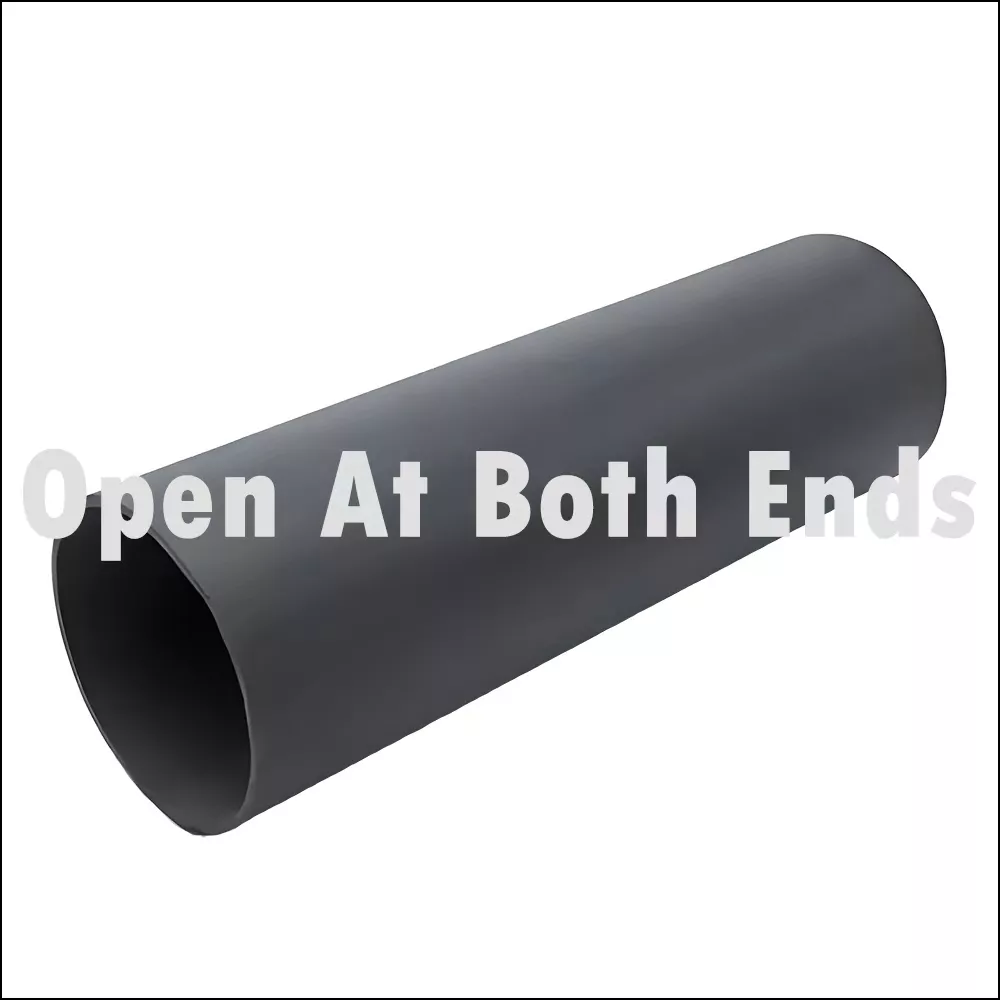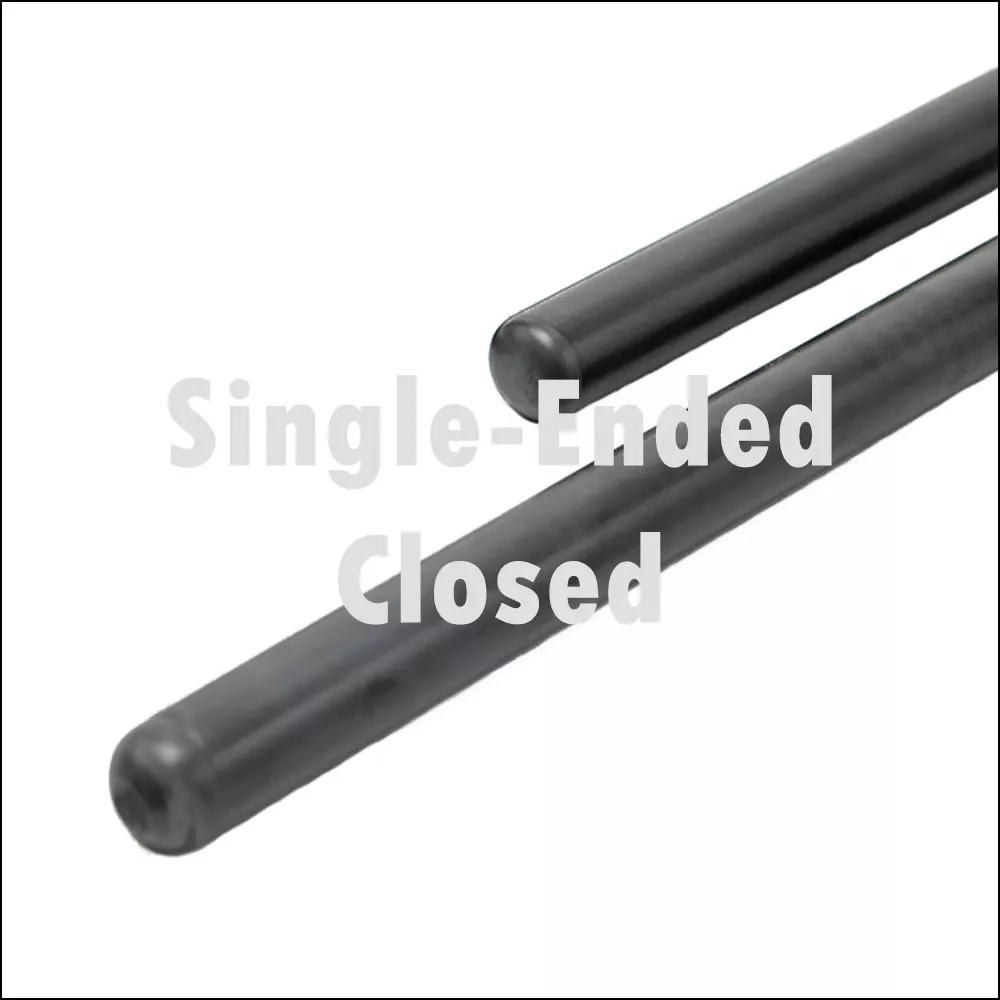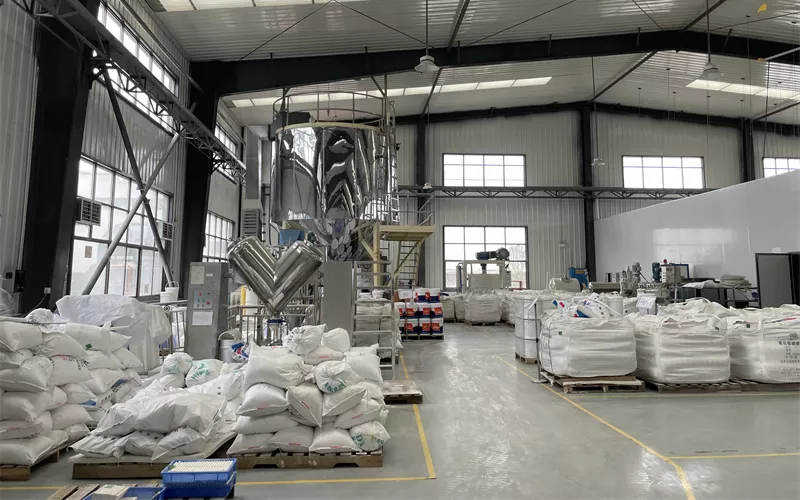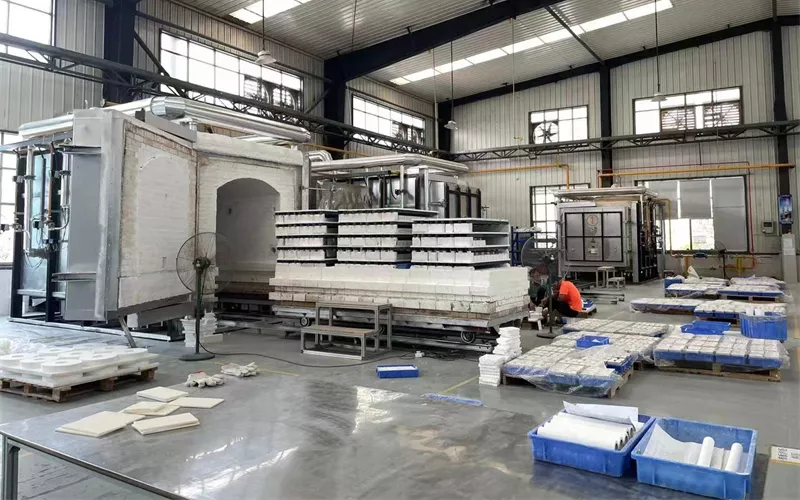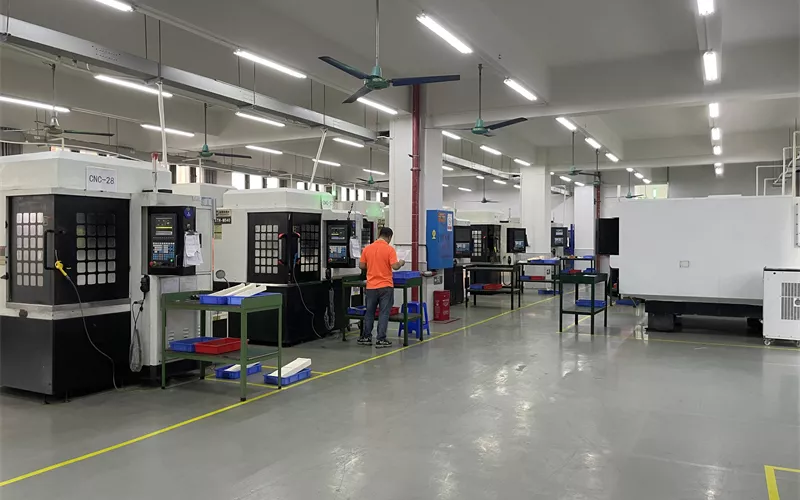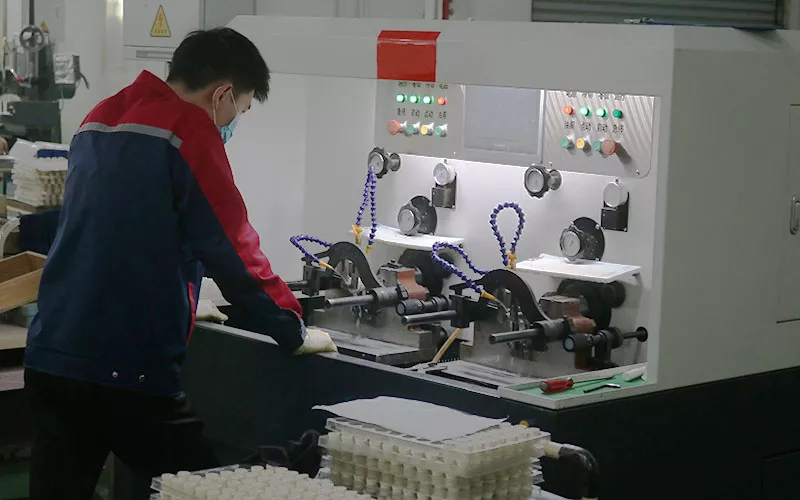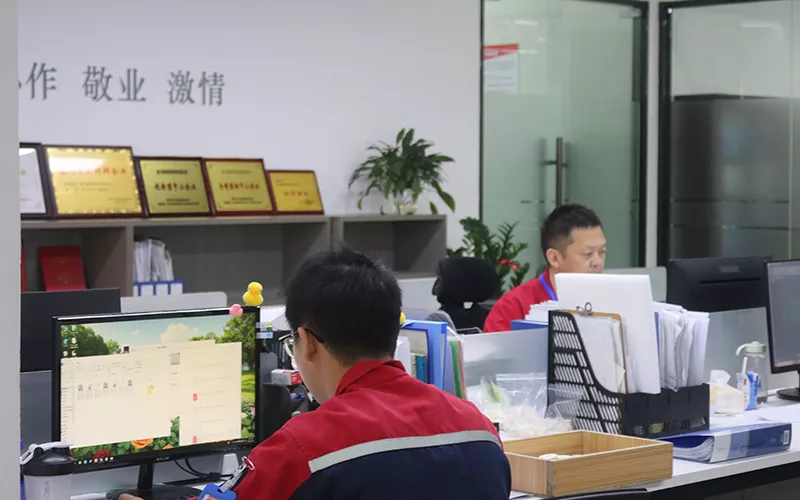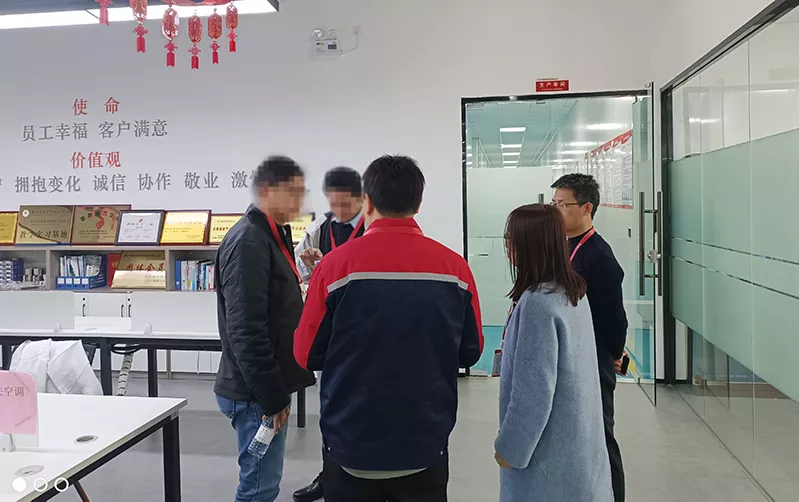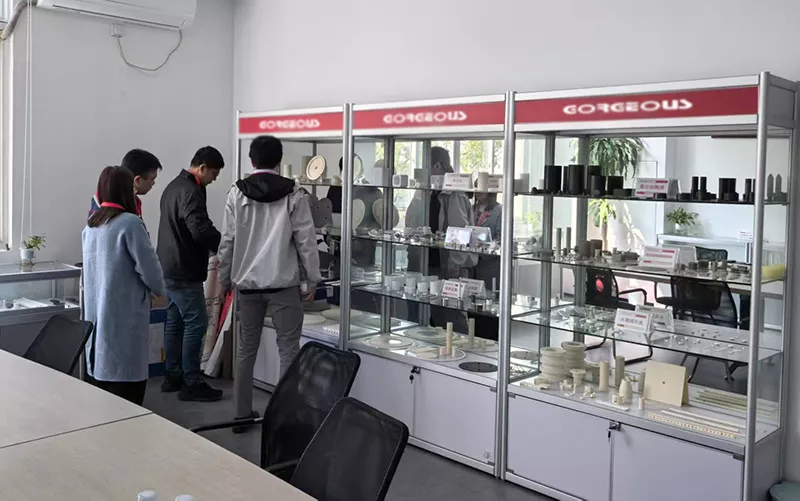Silicon Carbide Ceramic Tube
Gorgeous silicon carbide tubes are made of high-quality SiC and are available in a variety of custom purities and sizes.
Q élevéuality SiC Tube
Fournisseurs de traitement personnalisé
SiC Tube Description
GORGEOUS offers a variety of silicon carbide ceramic tubes, including sintered, reaction-bonded, and recrystallized silicon carbide tubes.
Reaction-bonded and sintered silicon carbide tubes offer superior mechanical strength and wear resistance, making them ideal for high-load and demanding applications. Recrystallized silicon carbide tubes, on the other hand, boast higher purity and high-temperature resistance, making them suitable for long-term, stable operation in extreme temperature environments.
Supply Various Shapes of Silicon Carbide Ceramic Tubes
Fournir aux clients des solutions personnalisées en fonction de leurs besoins
Supply Silicon Carbide Tubes for Various Purposes
GORGEOUS can customize various types of silicon carbide tubes for customers, including: protection tubes, high-temperature furnace tubes, filter membrane tubes, etc.
Standard Silicon Carbide Tube
Standard silicon nitride tubes, accept customization, can be shipped quickly, send a request to get a quote.
SiC Thermocouple Protection Tube
Single-ended closed protection tube, specially designed for thermocouple protection, can be customized. Send your request to get a quote.

Silicon Carbide Furnace Tube
It can be used in high-temperature furnaces and is designed for high-temperature environments. Send us your request to get a quote.
Silicon Carbide Membrane Tube
For filtration and separation processes, choose a custom process based on your needs. Send us an inquiry to get a quote.
Advantages of Silicon Carbide Ceramic Tubes
Dureté élevée
Résistant à la corrosion
conductivité thermique élevée

Résistance aux hautes températures
Carbure de silicium fritté sans pression
Carbure de silicium fritté par réaction
Impression 3D de céramiques en carbure de silicium
Silicon Carbide Tube Use
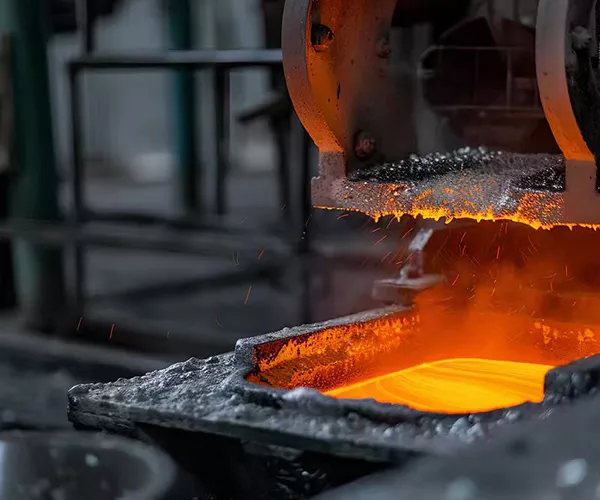
Pyrometallurgy & Metal Processing
Silicon carbide ceramic tubes can operate stably at high temperatures of 1400–1700°C for extended periods. As thermocouple protection tubes, they offer high thermal conductivity and fast temperature response, enabling more accurate temperature measurement. As furnace tubes, their corrosion resistance allows them to withstand the erosion of molten metal, slag, and chemical atmospheres.
Couramment utilisé dans :Thermocouple protection tubes, solution transmission tubes, furnace components
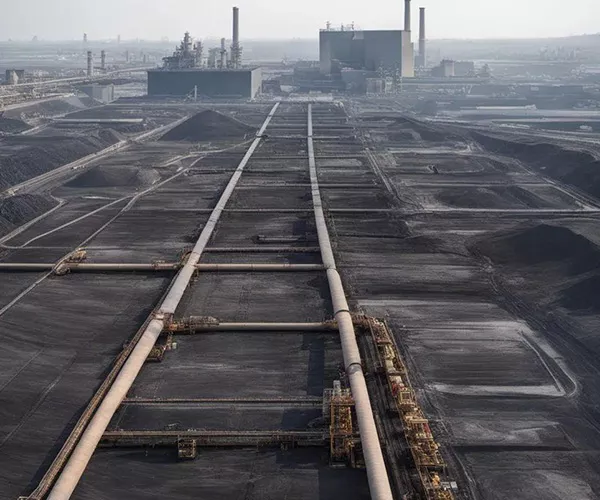
Chemical and Corrosive Media Transportation
Silicon carbide tubes have excellent chemical inertness to almost all inorganic acids and alkalis, and will not peel or be contaminated due to long-term exposure to corrosive media.
Couramment utilisé dans :Corrosion-resistant pipes, reactor liners, high-pressure corrosive medium protection pipes
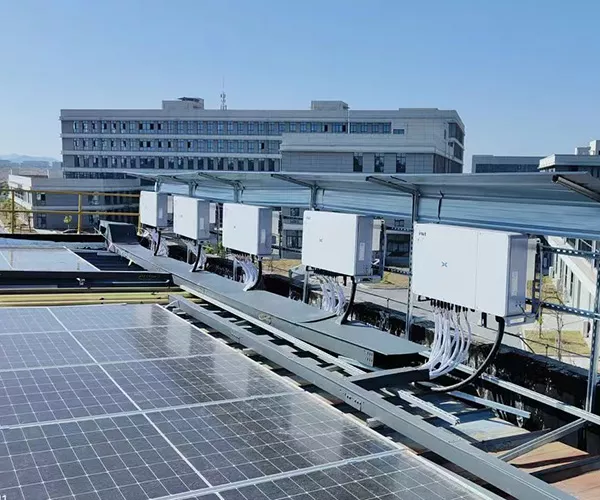
Semiconductor & Solar Industry
High-purity silicon carbide material can prevent metal contamination of silicon wafers, and silicon carbide has strong thermal shock resistance and can withstand rapid temperature cycles.
Couramment utilisé dans :Wafer heat treatment furnace tubes, photovoltaic industry heating tubes and support tubes.

Environment and Energy
Silicon carbide tubes can withstand long-term exposure to oxidizing, reducing, and mixed atmospheres, maintaining strength and structural stability in these extreme conditions. They are also used for transporting hazardous waste gases and liquids for high-temperature incineration.
Couramment utilisé dans :Incinerator tube、nuclear fuel cladding tube.

Mechanical and Wear Parts
Silicon carbide has a Mohs hardness of nearly 9, making it second only to diamond in wear resistance. It can be used as a highly wear-resistant mechanical component, capable of long-term operation even in high-velocity fluids containing sand and solid particles. Common applications include various pump shafts and mechanical seals.
Couramment utilisé dans :Wear-resistant tube, wear-resistant linings, guide tube.
Êtes-vous inquiet au sujet du MOQ ?
Une quantité minimale de commande (QMC) d'une pièce est disponible pour répondre aux besoins spécifiques des clients. Faites le premier pas et découvrez nos services.
Pourquoi choisir GORGEOUS ?
GORGEOUS accorde une grande importance au contrôle qualité afin de garantir que chaque tube en alumine répond aux exigences de ses clients. Notre processus d'inspection qualité est rigoureux et méticuleux. Des matières premières aux produits céramiques, chaque étape du processus est inspectée et testée avec précision.
De plus, GORGEOUS est une usine qui a passé la certification du système de gestion de la qualité de l'industrie automobile IATF16949:2016 et la certification de gestion de la qualité ISO9001:2015, qui peut fournir aux clients les meilleurs services personnalisés.
Nos réussites en matière de passeports Témoignages
We have worked with GORGEOUS more than once and the quality of the ceramic products they provide is excellent.

James Walker
GORGEOUS's custom-made ceramic tubes are a perfect fit for our experimental setup.

Michael Anderson
GORGEOUS is a reliable supplier of ceramic components. Our custom-made ceramic tubes were delivered on time, met all technical specifications, and integrated seamlessly into our components.

David
FAQ
What are the main benefits of using silicon carbide tubes?
GORGEOUS silicon carbide is inert to a wide range of corrosive chemicals, including strong acids and bases, and is temperature-resistant up to 200°C.
Silicon carbide tubing can replace most materials, such as graphite, metals, and alloys, which can introduce contamination over time due to corrosion. Other key advantages include high heat transfer, excellent mechanical strength, and low thermal expansion.
Types of SiC Tubes?
There are mainly reaction bonded SiC tubes, sintered SiC tubes, recrystallized SiC tubes, etc.
What are the advantages of SiC tubes?
Silicon carbide tubes have extremely high hardness (equivalent to diamond grade), excellent thermal shock resistance and thermal stability, strong chemical corrosion resistance, low thermal expansion coefficient, high heating/cooling efficiency, longer life, and low maintenance costs.
How to Choose the Right Type?
If you are looking for extreme corrosion resistance, then recrystallized SiC is recommended; if you want high mechanical strength, then sintered SiC is optional; if you need cost-effectiveness, you can consider reaction-bonded SiC.
